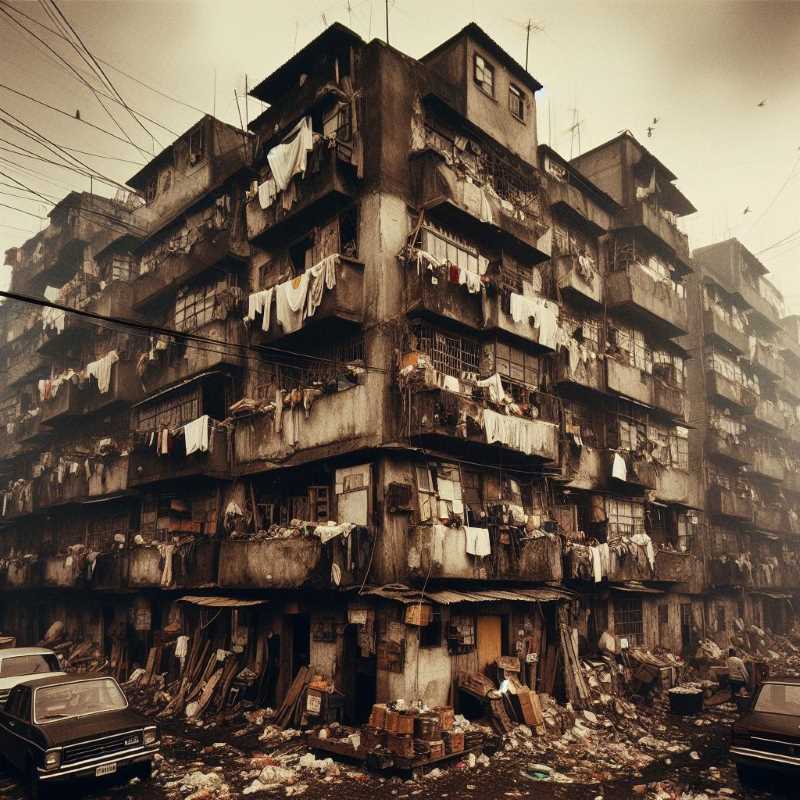Shifting Narratives of Juvenile Delinquency in the 1980s Mexico
A landmark 1984 study in Mexico City exposed the roots of juvenile delinquency. Troubled homes, harsh environments, and a lack of opportunity pushed young men into crime, creating a stark portrait of social hardship.

A specter haunted Mexico City in the 1980s – the figure of the juvenile offender. The Mexican media painted starkly contrasting portraits of these troubled youths: they were either irredeemable threats to society or hapless victims of circumstance, deserving of pity rather than punishment. This ambiguity mirrored a broader tension within Mexican society as the economic crisis of the 1980s began to tear at the social fabric.
In 1984, seeking a clearer understanding, the Federal District government launched an ambitious multidisciplinary study of 151 minors incarcerated in the Men's Guidance School. Researchers delved into the youths' lives, interviewing them and their families, scouring records, and even conducting home visits. Psychological evaluations added another layer of insight, painting a picture of the complex forces that shaped these young offenders.
Troubled Homes, Turbulent Environments
A common thread emerged: the minors' backgrounds were scarred by hardship. They came from broken, dysfunctional, or absent homes, a harsh reality that set the stage for future conflict. School, meant to be a place of learning and opportunity, instead proved a breeding ground for trouble. Alcohol and drug use were rampant, and dropping out opened the door to the criminal world. Even something as basic as food took on immense importance. In the context of Mexico's economic woes, hunger became a driving force, pushing desperate youths towards acts they might otherwise abhor.
The social circles in which these young people moved played a decisive role as well. Those who worked on the streets were particularly exposed to harmful influences – older “thugs”, drunks, and petty criminals. Worse, the study revealed how vulnerable these minors were to shocking forms of abuse, including sexual assault and exploitation. Even the home could be dangerous; shared living spaces in crowded tenements were often hotbeds of vice and idleness. And always, the media loomed in the background, its incessant drumbeat of advertisements for alcohol and cigarettes luring young minds.

Portrait of a Young Offender
The study crystallized a typical offender profile: a young, single male, aged 16 to 18, likely from a marginalized area of Mexico City or its sprawling suburbs. This data shed light on the social geography of crime within the heaving metropolis.
But the study also looked beyond mere demographics. It recognized that repeat offenses stemmed from a learned behavior, a dangerous sense of identity and belonging forged within criminal groups. These young men found camaraderie and acceptance on the streets that they'd been denied at home. The study made a significant stride forward by recognizing that “antisocial tendency” had deep roots, nurtured not just by a youth's current circumstances but by the harshness of their formative years.
A Valuable Window into History
The “Miguel de la Madrid” collection in the General Archive of the Nation offers a rich trove of material to complement this landmark study. These documents give us a unique glimpse into the lives of Mexico's troubled youth and provide a poignant snapshot of a society grappling with changing values and economic hardship.
This article has sought to provide a human dimension to a complex historical issue. While the 1980s are often remembered for economic turmoil, we should not forget the social cost – a generation of youth whose stories played out between victimhood and villainy, starkly framed by the anxieties of their time.




